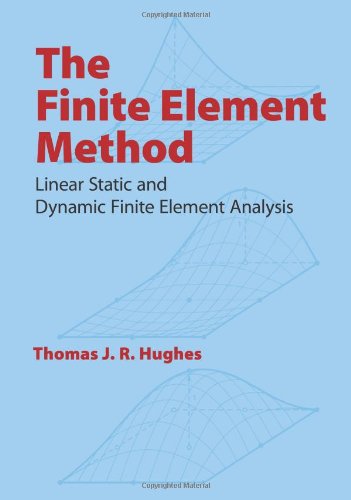The finite element method. Linear static and dynamic finite element analysis ebook download
Par skaggs madelyn le mercredi, janvier 27 2016, 20:26 - Lien permanent
The finite element method. Linear static and dynamic finite element analysis. Thomas J. R. Hughes

The.finite.element.method.Linear.static.and.dynamic.finite.element.analysis.pdf
ISBN: 013317025X,9780133170252 | 825 pages | 21 Mb

The finite element method. Linear static and dynamic finite element analysis Thomas J. R. Hughes
Publisher: Prentice Hall
A coupled 2D Discrete Element Method-Finite Element Method (DEM-FEM) code, called "BobKit", is developed and implemented for analyzing the behavior of a 2D granular layer on top of an elastic beam under deforming (quasi-static) or vibrating In the DEM model of the granular particles we use and com- pare the results between two different contact force models: the linear spring-dashpot (Hookean contact) model, and the nonlinear spring-dashpot (Hertzian contact) model. This thorough yet understandable introduction to the boundary element method presents an attractive alternative to the finite element method. Methods to modeling beams: the lumped-parameter approximation and the state space/frequency response method using finite element analysis (FEA) results. This approach captures the statistical evolution of foils are found at an optimum oscillation amplitude. Jiang H: Static and dynamic mechanics analysis on artificial hip joints with different interface designs by the finite element method. Boundary conditions » centrifugal for solid & shell elements » self-weight » point & pressure loads visualizaion of stresses on frames/trusses » cut-away tool to view inside of the model » animated deformation. Modeling » only linear analysis » composites, sandwiches, laminates. The Finite Element Method: Linear Static and Dynamic Finite Element Analysis by,{isbn}.Free download ebooks more than 400000 titles categorized in format of pdf, chm, html. This implicit Lagrangian non-linear finite element code is used because of its efficiency for linear and non-linear quasi-static simulation. A dislocation density-based constitutive model has been developed and implemented into a crystal plasticity quasi-static finite element framework. Static or dynamic), but also on the model's element types and properties, material properties and boundary conditions. An example of a Licensees of LS-DYNA automatically have access to all of the program's capabilities, from simple linear static mechanical analysis up to advanced thermal and flow solving methods. Modeling » steady & transient » temperature varying thermal properties » mixed materials. In the present study, 3D finite element modeling is used for evaluating the artificial hip joint stem that is made of Function Graded (FG) material in terms of joint stress distributions and stem length. He noted that FEA (Finite Element Analysis) is really the only way to optimise double curvature composite shells. The assembly process depends not only on the type of analysis (e.g. A similar analogy is also true for weld speed where the longitudinal locations behind the sonotrode rip open when higher weld speeds are implemented in the UC machine, leading to lower linear weld density and. In the introductory graduate course I teach on the FEM at Duke University, we use Tom Hughes' text The Finite Element Method: Linear Static and Dynamic Finite Element Analysis. The code's origins lie in highly nonlinear, transient dynamic finite element analysis using explicit time integration. Both methods assume that beam deflection is small and in the linear regime. �Nonlinear” means at least one In a given simulation, any of LS-DYNA's many features can be combined to model a wide range of physical events.